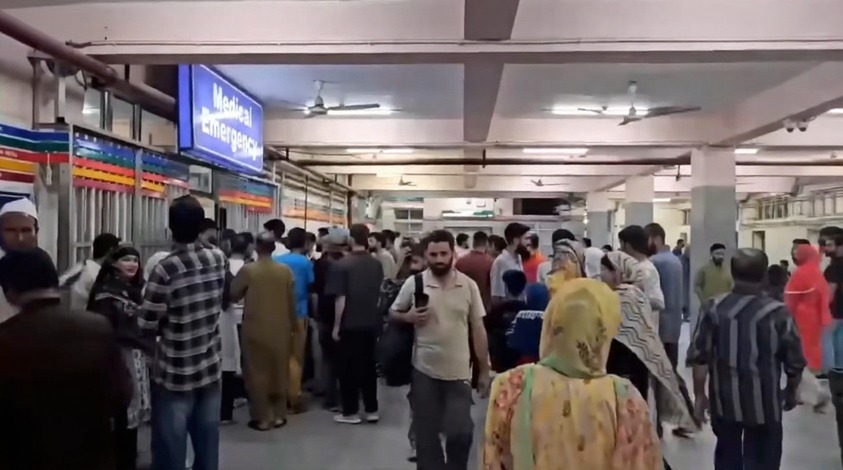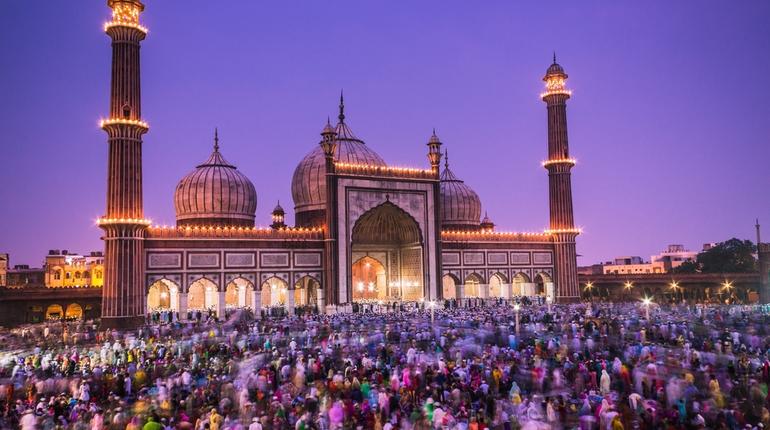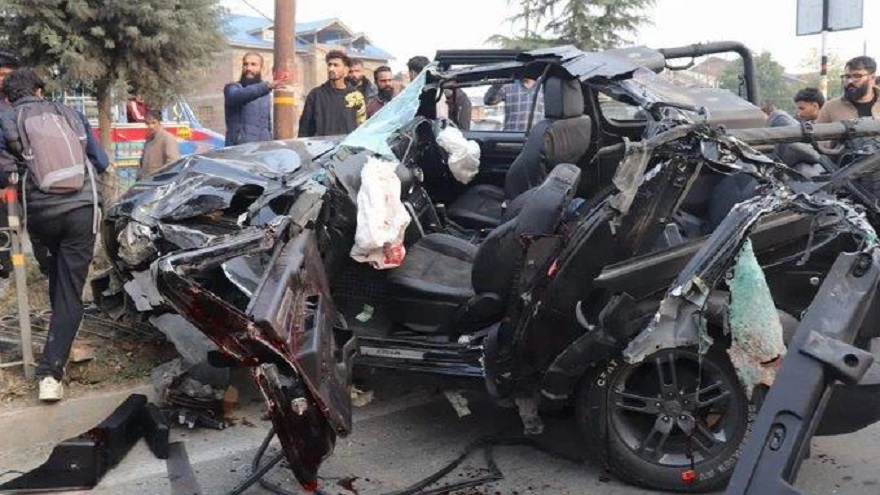SMHS Hospital Srinagar Assault Incident: Doctor Attacked, Healthcare Safety in Kashmir Under Scrutiny
By: Javid Amin | Srinagar | 25 July 2025
The Shocking Incident That Triggered a Healthcare Crisis
On July 22, 2025, a disturbing episode unfolded at SMHS Hospital Srinagar, one of the busiest tertiary healthcare facilities in Jammu & Kashmir.
A resident doctor was physically assaulted inside the emergency ward by an attendant of a critically ill patient. The doctor was struck from behind while actively attending to the patient—a moment that was captured on CCTV cameras and quickly went viral across social media platforms.
The assault at SMHS Hospital Srinagar is not just a one-off act of violence—it has become a flashpoint for a wider public debate on hospital safety, overcrowding, and emotional volatility in the fragile healthcare ecosystem of Kashmir.
What Happened? A Timeline of the Incident
The emergency ward at SMHS was already under pressure when a critically ill patient was rushed in. As the attending medical team sprang into action, an attendant—reportedly frustrated or emotionally overwhelmed—assaulted a junior doctor from behind.
-
The doctor collapsed but was not seriously injured.
-
Security personnel intervened within minutes.
-
An FIR was immediately filed against the accused based on CCTV footage.
-
The doctor’s colleagues staged a protest soon after.
This incident was not isolated but symptomatic of growing tensions in public hospitals operating at or beyond their capacity.
A Glimpse Into SMHS Hospital: Kashmir’s Overburdened Lifeline
SMHS Hospital, short for Sri Maharaja Hari Singh Hospital, is a government-run facility located in Srinagar. It serves as a critical referral center, catering to patients from every corner of the Kashmir Valley.
Key Stats:
-
Over 27 lakh patient visits annually
-
Average of 2000+ daily emergency cases
-
Infrastructure designed for a fraction of the current patient load
-
Severe staff shortage, particularly in emergency medicine and nursing
Hospital officials stated that each patient is usually accompanied by 3–4 attendants, many of whom overcrowd corridors, argue with staff, and interfere with ongoing medical procedures.
Aftermath: A Strike, an FIR, and Public Outcry
Immediately after the assault, junior doctors across departments went on strike, demanding:
-
Arrest of the accused
-
Enhanced security
-
Legal safeguards for on-duty doctors
Medical services were temporarily affected, although the emergency wing remained partially functional due to senior staff stepping in.
Health Minister’s Reaction:
Sakina Itoo, the newly appointed Health Minister of J&K, condemned the strike, stating:
“Abandoning emergency services and patient care is unjustified. Patients should not suffer for someone else’s wrongdoing.”
She assured the medical fraternity of:
-
A 15-day inquiry into the incident
-
Formation of a grievance redressal cell
-
Introduction of Standard Operating Procedures (SOPs) for doctor accountability
These SOPs will include mandatory display of nameplates, wearing white aprons, and entry restrictions for attendants inside critical wards.
Hospital Administrator Speaks: “Unfortunate but Revealing”
Hospital Administrator Muhammad Ashraf Hakak described the incident as:
“Unfortunate, but revealing of the challenges our doctors face daily.”
He emphasized the urgent need for:
-
Better public discipline
-
Security upgrades in emergency wards
-
Reassessing attendant policy to avoid overcrowding and chaos
His statement underlined the dual burden carried by government doctors—managing an overwhelming patient load while navigating emotionally charged environments.
Press Not Spared: Assault on Journalists Sparks Media Outrage
In a shocking extension of the chaos, journalists covering the incident were also manhandled and forced to leave the hospital premises. Their mobile phones were reportedly confiscated or damaged.
The Press Club of Kashmir condemned the attack:
“This is not just an assault on individuals, but an attack on the entire media fraternity.”
They demanded legal action and urged hospital authorities to cooperate with responsible reporting, not silence it.
Root Causes: Overcrowding, Frustration, and Institutional Breakdown
Experts say the assault at SMHS Hospital Srinagar is a culmination of long-standing systemic issues.
Overcrowding:
-
One hospital serves lakhs of patients annually.
-
Shortage of satellite or secondary care units.
-
Tertiary care hospitals like SMHS bear the entire burden of primary and secondary healthcare.
Emotional Burnout:
-
Doctors suffer extreme work stress.
-
Patients’ families are often emotionally overwhelmed and misinformed.
-
Miscommunication frequently results in altercations and mistrust.
Fragile Security:
-
Only two guards per emergency wing on average.
-
Lack of trained emergency security personnel.
-
No separate buffer zones for attendants and staff.
Public Response: Sympathy, Frustration, and Mixed Reactions
While many citizens expressed solidarity with the medical fraternity, others questioned the timing of the strike and whether it endangered other patients.
Voices from the Ground:
“Doctors deserve respect and protection. But leaving patients unattended isn’t the answer.”
— Nighat Wani, social worker
“Attendants should not be allowed to overcrowd ERs. It’s unsafe for everyone.”
— Dr. Junaid Ahmad, junior resident
What Needs to Change? Urgent Reforms Suggested
The SMHS Hospital assault has exposed a critical gap in hospital safety management and patient-doctor relations in Kashmir.
Immediate Recommendations:
-
Digital token systems to regulate patient attendants
-
Mandatory security presence in high-risk wards
-
Mental health counselors for attendants and patients
-
Communication training for frontline doctors and nurses
-
CCTV coverage & alarm buttons in all emergency zones
Wider Implications for J&K’s Health Infrastructure
If SMHS, the most equipped hospital in the Valley, cannot prevent violence and chaos—what about district and sub-district hospitals?
This incident has reignited concerns over:
-
Inadequate investment in healthcare infrastructure
-
Lack of decentralized healthcare services
-
Fragile doctor-patient trust in conflict-prone regions
National Parallels: Violence Against Doctors Across India
Unfortunately, violence against doctors is not new in India.
According to a 2023 IMA (Indian Medical Association) report:
-
Over 75% of doctors have faced violence during duty.
-
Emergency departments and ICU zones are most vulnerable.
-
Only a handful of states have laws to criminalize such attacks.
The SMHS incident now joins a growing list of such avoidable assaults.
Conclusion: A Wake-Up Call for Everyone
The SMHS Hospital Srinagar assault incident has done more than shock the Valley—it has ignited a much-needed dialogue on safety, discipline, and empathy within the healthcare ecosystem.
For Doctors:
They must feel safe and respected in order to perform their duties effectively.
For Attendants:
They must act responsibly, avoid interference, and maintain decorum in sensitive spaces.
For the Government:
Now is the time for concrete reforms—not just committee promises.
Healthcare cannot function in fear. It must rest on a foundation of trust, cooperation, and mutual respect.
Quick Summary
| Element | Details |
|---|---|
| Incident Date | July 22, 2025 |
| Location | SMHS Hospital, Srinagar |
| Event | Assault on a resident doctor by an attendant |
| Response | FIR filed; doctors staged protests |
| Government Action | 15-day probe, new SOPs, grievance cell |
| Media Reaction | Journalists assaulted; Press Club condemns |
| Key Issues Raised | Overcrowding, lack of discipline, safety gaps |
| Public Sentiment | Mixed—support for doctors, concern over strike |



